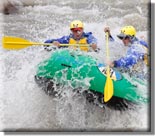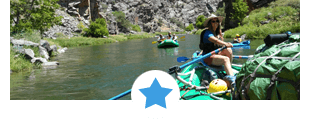How The Arizona Salt River Became Salty
The Thirsty Tree – The Tamarisk Salt Cedar
There are only so few places in the world where one can go salt river rafting as it’s not exactly a common occurrence to find salty rivers.White water rafting AZ is an extremely thrilling and enjoyable experience, one that countless people enjoy every year whether that is by swimming, tubing, kayaking, or doing some Salt River white water rafting.
Though, with as many people that enjoy the Arizona Salt River, very few actually understand why the fresh water of the Gila River, which turns into the Salt River Tributary, becomes salty to begin with once it leaves the White Mountains. The interesting thing is there is a little known reason as to why, which is even less common throughout the rivers of the world.
The Thirsty Tree
The Salt Cedar, also known as the Tamarisk, is a plant that lines the Salt River. They were introduced as a means save top soil from blowing away off of farms, to help keep banks from eroding into the river, and interestingly as a means to slow down evaporation of the river itself. They also replaced the areas where old forests of cottonwoods and willows once prospered. The Salt Cedar originates in dry climates throughout the Middle East, Asia, and parts of Africa. When they were introduced, there were no apparent negative side results whatsoever and the plant itself did very well in its new climate.
What Makes The Salt Cedars Salty
The Tamarisk has an incredible ability to draw the salt from the earth through a series of complex web of roots. The salt is then stored in the leaves of the tree. As wind blows and rain falls, the salt is knocked off the tree and into the water, thus making it salty.
A Mistake From Long Ago
Miners and farmers believed it was a genius idea; bring in a tree that requires little water, preserves the top soil and river banks, shields crops and homes from wind, and covers the river which will help to prevent evaporation of the river. What they found decades later was that the Salt Cedar had taken over and spread like wild fire. Little natural vegetation remained where the Tamarisk took hold and they wondered how much water was being lost to the stomata of the Salt Cedars.
So they quickly made attempts to remove the Salt Cedar from river shores all across the southwest. But they found the tree were much more difficult removing than they were introducing. Its seeds would linger in the soil until rain fell, and trees would sprout up in their fallen brethren’s place. It was this cycle that continued for years until scientists found something out.
Mistaking A Mistake For A Mistake
What scientists found out in the mid 80s was that the tamarisk had not killed off the other vegetation, but the natural plants had died off due to their own inability to survive any longer. Areas where local vegetation persisted saw fewer Salt Cedars, which was because the Tamarisk could not naturally compete. They relied upon the local vegetation dying off for their own survival. They did in fact save the top soil and keep the river banks from eroding as there was little other vegetation helping in that fashion. They also found that the tree likely helped prevent the river water from evaporating more than the amount they took in for their own hydration.
So in the end, Rafting AZ would not be the same without it’s unique salt river. The river would not have nearly as much salt in it if it wasn’t for the Tamarisk. So we should be thanking this foreign tree for helping to form a landscape and creating our unique river which would not be the same without it. AZ rafting adventures and salt river rafting trips can all be made through Wilderness Aware Rafting.


